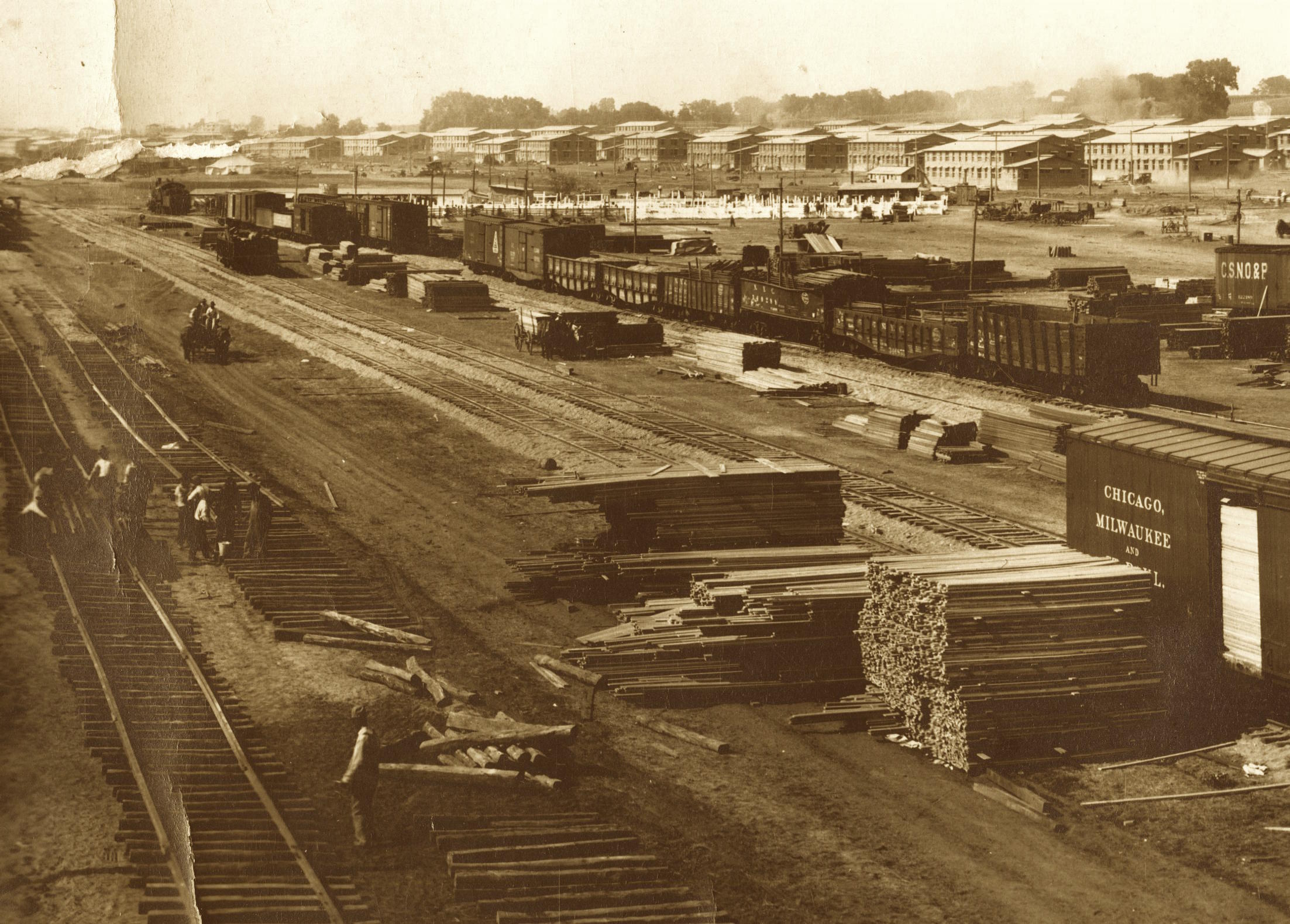
Stacked lumber unloaded from railcars at Camp Dodge awaits transport by horse drawn wagons as workers prepare additional rail riding sidings in late summer 1917. Photo courtesy of Iowa Gold Star Military Museum
By Michael W. Vogt
On April 6, 1917, the United States declared war against Germany triggering America’s largest military mobilization to date. The United States Army, numbering 218,324 Regular, National Guard and Army Reserve soldiers, expanded by recruiting Regular Army Divisions to full strength, consolidating existing state guard units into National Guard Divisions and drafting men into National Army divisions. The pre-existing Iowa National Guard facility at Camp Dodge became the “13th National Army Cantonment” on June 18, 1917, to train draftees for the 88th Infantry Division scheduled for organization on Sept. 4, 1917.
Several thousand workers began construction in late June 1917. Charles Weitz and Sons of Des Moines supervised the project. Camp Dodge rapidly grew to contain 20 miles of dirt streets, more than 150 two-story barracks billeting 150 men, a 2,196-bed hospital, a power plant, an artillery range, 32 miles of water mains and a one million gallon reservoir. By war’s end, Camp Dodge contained 1,509 buildings on a compound of 5,200 acres constructed at a cost of $9,943,500.
On Sept. 5, 1917, George Whitmer of Des Moines was the first of 2,350 initial Camp Dodge inductees to begin a three-month period of basic training. Twenty-six-year-old Joe Romedahl, of rural Luther, recalled, “As soon as we got to Camp Dodge … we were taken over to a large building where we were all sent to different companies … Not being used to it, I was shocked to hear the way some of the officers talked to the men.” Inductees received instruction emphasizing physical fitness, trench warfare, gas mask proficiency, grenade use, bayonet combat, firearms marksmanship and offensive tactics.
Of the 847 black draftees from Iowa, most served in segregated pioneer infantry (engineer) regiments, depot brigades, stevedore regiments and labor battalions. In November 1917, 2,600 black inductees from Alabama, 127 from Iowa and 97 from Illinois mustered at Camp Dodge in late October to form the 366th Infantry Regiment. The 366th trained at Camp Dodge until departing by train in early June 1918 for eventual deployment and combat in France as part of the 92nd Infantry Division.
TO READ MORE ABOUT THIS STORY AND OTHER FASCINATING STORIES ABOUT IOWA HISTORY, subscribe to Iowa History Journal. You can also purchase back issues at the store.
